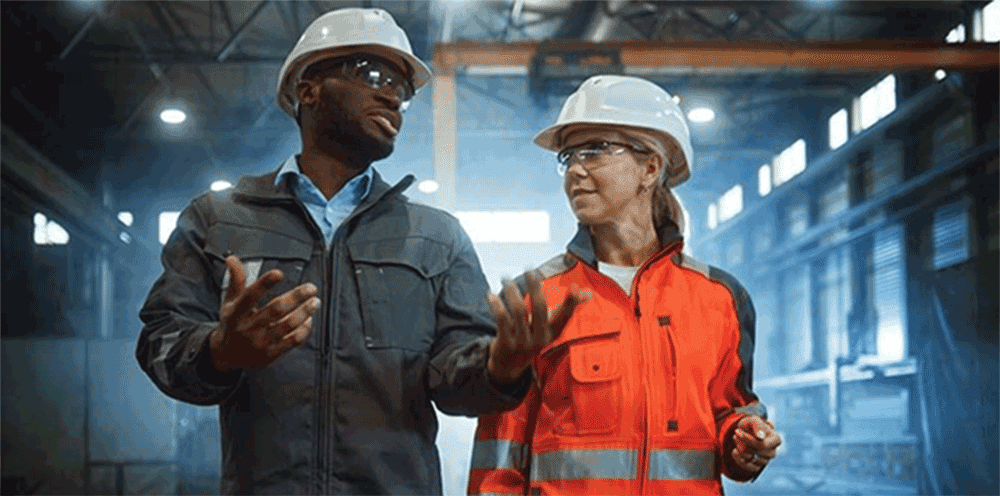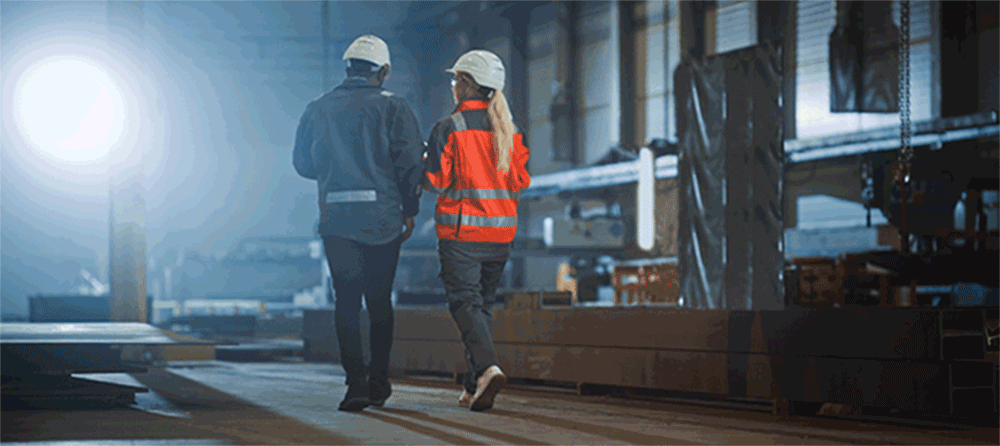
Psychological Safety
A Hot Concept in Management – Can it create safer workplaces?
This article was published in Safety + Health Magazine – 23rd May 2021.
Author – Susan Vargas

Every day, occupational safety professionals deal with the perception of risk – or lack thereof – and its consequences for human behavior and safety outcomes. But they might not consider some of the risks workers fear most: humiliation, loss of status and rejection.
Organizational researchers have found that such anxieties keep people from reaching their full potential as contributing members of a team – and what calms these fears is a sense of psychological safety.
Psychological safety isn’t a new idea; it has circulated in organizational psychology since the 1960s. The concept gained new prominence in 2016, when the New York Times reported that Google’s ambitious team efficacy study, Project Aristotle, had identified psychological safety as the single most important determinant of team success. It has since been widely hailed in management circles as key to employee engagement and group productivity, and it’s now a hot topic in the occupational safety and health community.
 Amy Edmondson is the Novartis professor of leadership and management at Harvard Business School; author of the book “The Fearless Organization: Creating Psychological Safety in the Workplace for Learning, Innovation, and Growth”; and a prominent researcher on the topic. Edmondson defines psychological safety as “a belief that the environment is safe for interpersonal risk-taking – like speaking up with a question, a concern, an idea or even a mistake.”
Amy Edmondson is the Novartis professor of leadership and management at Harvard Business School; author of the book “The Fearless Organization: Creating Psychological Safety in the Workplace for Learning, Innovation, and Growth”; and a prominent researcher on the topic. Edmondson defines psychological safety as “a belief that the environment is safe for interpersonal risk-taking – like speaking up with a question, a concern, an idea or even a mistake.”
In a study published in 1999, she describes psychological safety in organizational settings as “a sense of confidence that the team will not embarrass, reject or punish someone for speaking up” and “a team climate characterized by interpersonal trust and mutual respect in which people are comfortable being themselves.”
If you would like to visit Amy Edmondson’s own web page just click here.
Edmondson and others contend that this sense of security allows team members to freely communicate, brainstorm, report errors and innovate. But even with “safety” baked right into the name, psychological safety seems more like a team-building concept than a workplace safety issue.
So, why should safety pros care about psychological safety, and what are the implications of this idea for workplace safety culture?
Where psychological safety meets workplace safety
Edmondson sees the ability to speak freely as inextricably linked to workplace safety: “In analyses of preventable workplace safety incidents, there is frequently – if not in the majority of cases – evidence that someone had a concern but didn’t speak up about it, or didn’t stop someone from behaving in an unsafe way, because they didn’t feel psychologically safe to do so.”
When safety pros ask workers to speak up about unsafe conditions or to step in when a co-worker is engaging in risky behaviors, they might not understand the emotional stakes involved, notes Rosa Antonia Carrillo, president of safety consultancy Carrillo and Associates and author of the book “The Relationship Factor in Safety Leadership: Achieving Success through Employee Engagement.”
“Interaction is one of the riskiest endeavors a human being can engage in,” Carrillo said, “because every time you interact, you stand the possibility of being humiliated or rejected.”
She points out that fear of rejection is a powerful force in the human mind because it stems from hardwired, primal instincts similar to the need for food and shelter.
“Anthropologists have explained that the need to belong was a survival mechanism,” she said. “You needed to belong to your tribe, your group, because they were the ones that helped protect and feed you, so if you got kicked out of the group, you were dead. And that is what gets triggered in the human brain when there’s a fear of ostracism or exclusion.”
Silence, Carrillo said, is dangerous in a variety of workplace scenarios, such as when someone fails to report an error or a near miss, or hesitates to ask important questions out of fear of looking incompetent.
“The psychological state of the human being plays a large role in how well they do their work.”
“When you lack psychological safety, you have to evaluate how what you talk about is going to impact your status and how people perceive you, and that limits what you’re willing to communicate,” she said. “So it’s absolutely key that, as a safety professional, you have a relationship with workers where they feel it’s psychologically safe to give you bad news, to share mistakes, to share concerns or even to give you critical feedback, because we can’t improve without that feedback.”
Communication isn’t the only aspect of work life that suffers from a lack of psychological safety.
“The psychological state of the human being plays a large role in how well they do their work,” Carrillo said. Because the energy a worker puts into avoiding conflict and protecting their status isn’t being used to perform at their best – or to monitor their safety and surroundings – promoting psychological safety can eliminate a potential source of distraction and allow workers to be mentally present on the job.
The current state of psychological safety
Although the idea of psychological safety has already been embraced by organizations abroad – in Canada and Australia, for example – it has only recently begun to gain traction in the U.S. safety community.
 “We’re in the early stages of looking at this,” said Rachael Cooper, former senior program manager, substance use and harm prevention safety, at the National Safety Council. “There’s no OSHA or legal standard that an employer is going to be held to when they’re talking about psychological safety in the workplace. So, right now, NSC is acting as a convener of voices and looking at how we can make this a more accessible topic to employers of different sizes, across industries, etc.”
“We’re in the early stages of looking at this,” said Rachael Cooper, former senior program manager, substance use and harm prevention safety, at the National Safety Council. “There’s no OSHA or legal standard that an employer is going to be held to when they’re talking about psychological safety in the workplace. So, right now, NSC is acting as a convener of voices and looking at how we can make this a more accessible topic to employers of different sizes, across industries, etc.”
 Employers who are actively promoting psychological safety are navigating without a roadmap, noted Dina Toto, director of safety and health at The Chemours Co., a global chemistry company that’s in the process of rolling out an organization-wide training program on the topic.
Employers who are actively promoting psychological safety are navigating without a roadmap, noted Dina Toto, director of safety and health at The Chemours Co., a global chemistry company that’s in the process of rolling out an organization-wide training program on the topic.
“Our biggest challenge right now is we don’t have a lot to benchmark with,” she said. “We do look at other countries and some companies whose programs may be a little bit more mature, but these are relatively new concepts in workplace safety with many different facets.”
Complicating efforts to raise awareness of psychological safety is the fact that the term means different things to different people. Many in the safety field have broadened Edmondson’s definition of psychological safety to encompass a variety of related ideas, such as freedom from psychological harm or destigmatizing mental health conversations in the workplace.
“There’s nomenclature confusion,” Cooper said. “Even when we discuss this internally at NSC, we still make sure that we define it at the beginning of the conversation because it is really easy to flip to whatever you think is the most relevant aspect. Some people have associated it with diversity, equity and inclusion.
Some people have associated it strongly with workplace mental health.” Some organizations, including Chemours, view psychological safety as part of a holistic approach that includes physical and psychological well-being.
“We want to think about the entire person when thinking about safety,” Toto said. “In the chemical space, specifically, we’ve gotten really good at physical safety. We know what hazards to look for, we know how to measure it. But that doesn’t address the other side of safety, the other parts of a person, feeling safe in all aspects of what you do.”
The term also lends itself to some misconceptions – especially that “psychological safety” means conversations will be comfortable and messiness will be avoided.
“It is not simply being nice or a promise that all ideas will be adopted, or that the workplace will be free from conflict,” said Mark Hambrick, regional health and safety manager at Silent-Aire USA. “Psychological safety is the ability to have tough conversations and grow from them as an individual, group, team and organization.”
Hambrick has worked in environmental, health and safety since the 1990s, but adopted the idea of psychological safety only recently while pursuing a graduate degree in organizational leadership. His efforts to foster psychological safety among the teams he works with have required him to embrace discomfort.
“It’s a continuous work in progress,” he said. “It can be very challenging because you have to keep your ego in check, share your own experiences and weaknesses, and do a lot of self-reflection to understand the part you play in a situation. It’s the farthest thing from safe.”
This tension – making sure workers are comfortable enough to have uncomfortable conversations – is productive, Toto said. Even before Chemours’ psychological safety initiative, the company had been promoting “courageous conversations” as part of its continuous improvement efforts.
“If we want to keep improving, we need to have courageous conversations – in a very respectful way – in meetings or one on one,” she said. “Instead of tabling the hard stuff, you deal with it head-on and move on.”
The safety professional’s role
Although safety is in the concept’s name, experts agree that psychological safety should ideally be an organization-wide project rather than the sole responsibility of safety pros. The goal is to remove any barriers that keep workers from speaking up to colleagues across the organization, not just safety personnel.
The current state of psychological safety“In reality, you do need a full team effort to address psychological safety,” Cooper said. “You can’t do this without human resources, for example, because what if their policies don’t reflect what you’re trying to do?”
Without buy-in from stakeholders across an organization, progress can quickly be undone, Hambrick noted.
“It’s a snowball effect either way,” he said. “Once you get people to speak up and participate, they may encourage others to speak up and contribute as well. But any work we do toward building that can be torn down just as quickly if you have bad leadership or a supervisor who might not understand that their role is less auto-cratic and more as a facilitator.”
Chemours is rolling out its psychological safety initiative as a massive, company-wide training push driven by its HR department, with the assistance of operations, legal and safety personnel.
“We want everybody to own it,” Toto said. “It’s not just going to be our safety professionals driving this. It is going to be the role of everyone, if they see something, to say something and follow up.”
Of course, in organizations without this kind of commitment, safety pros who see value in the idea of psycho-logical safety may be going it alone – at least until they gain buy-in from managers, HR, etc. But where do they start?
“This is a long process,” Cooper said. “There isn’t a quick fix or a cut-and-dried implementation strategy.”
Fortunately, the experts agree, the role of safety pros and their contact with workers at all levels of the organization uniquely position them to enact small changes that can add up over time.
Psychological safety on a small scale
So, what does the promotion of psychological safety look like in practice? The experts list a variety of small but effective ways safety pros (and others) can begin cultivating it in their workplaces – many are things they might already be doing.
Ask questions. The first step is good listening. “Go out and commit yourself to learning as much as you can from colleagues,” Edmondson said. “What concerns, observations and ideas do they have? When you start asking questions of people in a curious and learning-oriented way, they will start speaking up. By inviting their voices, you make it safe for them to offer their voices.”
Be humble. Always learn from people before you try to teach them, Carrillo advises. “If you just go in and start telling people what they’re doing wrong or how to do things better, you will be creating a barrier because basically what you’re saying is, ‘I’m smarter than you. I’m better than you. I know more than you.’ And that closes the door.”
Build relationships. Remember to ask about people’s life outside of work, too. “Psychological safety is about creat-ing a sense of belonging,” Carrillo said. “And when you ask questions about someone’s family, etc., you’re build-ing a relationship, which is belonging.”
Value all perspectives. Psychological safety is built on the notion that everyone has something to offer the group. Every worker applies their own filter of knowledge and experiences to a situation, Hambrick said. “For example, someone with 20 years of experience versus somebody who literally just started their career – both of those people have things to offer,” he said. “The less-experienced person might not know the best way to do some-thing, but what they do have is a different risk tolerance, which can be eye-opening if we’ve normalized risks that shouldn’t be normalized.”
Foster autonomy. Hambrick has found that inviting workers to create their own solutions – soliciting ideas from as many members of a work group as possible – yields the best results. “I might have what I think is the absolute best idea for a particular circumstance, based on my experience and knowledge,” he said. “And it very well could be the best engineering control, the best practice or the best change to a process, but when I act as less of a subject matter expert and more of a facilitator, getting the people on the line level to come up with a solution – even if it might not be the best solution out there – it is the most effective solution because they own it and they try to make it work.”
This effect – what Hambrick calls the “force-multiplying” property of psychological safety – explains why the concept could be useful to even the most buzzword-weary safety pro. When workers contribute freely and fearlessly, openly discuss objections instead of quietly disregarding regulations, and are invited to give input and take ownership, safety pros might find that they spend less time auditing and “policing.”
“In the long run, it is going to help them do their jobs better, and also feel more fulfilled, because they’re going to be collaborating instead of fighting against resistance,” Carrillo said. “Trust is a great simplifier.”

“Embrace Psychological Safety for Success! Foster an environment where team members feel heard, valued, and free to share ideas without fear of judgment. Psychological safety fuels creativity and innovation, leading to stronger collaboration and problem-solving. Prioritize psychological safety in your workplace to enhance productivity and employee satisfaction. Discover the power of a safe, supportive, and inclusive atmosphere today! Click here to download the Psychological Safety Awareness Instrument”


